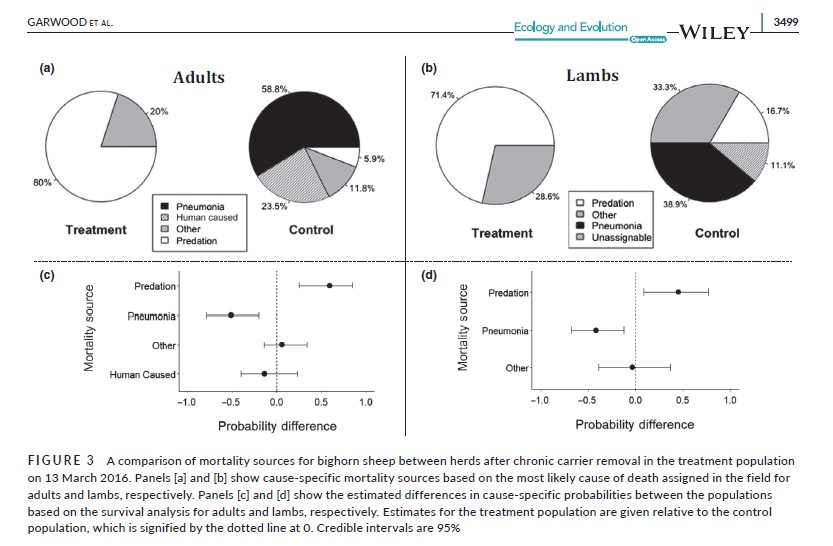Removal of chronic Mycoplasma ovipneumoniae carrier ewes
eliminates pneumonia in a bighorn sheep population
Project Information
In 2015, Matt Rippentrop of South Dakota contacted MTWSF regarding funding assistance for a (3) year study with South Dakota Game, Fish and Parks in Custer State Park. The project was entitled “Determining the role of chronic shedders in respiratory disease persistence, annual lamb recruitment, and transmission in bighorn sheep.”
Matt brought this study project to MTWSF for funding in 2015 and the chapter approved funding through our Grant in Aid program. The project has reached its conclusion and the full study is posted on our website under PROJECTS. The project hypothesis was that by removing chronic carriers of MOvi, they could reduce the persistence of disease in the herd. This was a beneficial project for the overall understanding of bighorn sheep diseases as well as potential management of herds that have struggled with mortality and lamb recruitment after a disease related die off.
Abstract:
- Chronic pathogen carriage is one mechanism that allows diseases to persist in populations. We hypothesized that persistent or recurrent pneumonia in bighorn sheep (Ovis canadensis) populations may be caused by chronic carriers of Mycoplasma ovipneumoniae (Mo). Our experimental approach allowed us to address a conservation need while investigating the role of chronic carriage in disease persistence.
- We tested our hypothesis in two bighorn sheep populations in South Dakota, USA. We identified and removed Mo chronic carriers from the Custer State Park (treatment) population. Simultaneously, we identified carriers but did not remove them from the Rapid City population (control). We predicted removal would result in decreased pneumonia, mortality, and Mo prevalence. Both population ranges had similar habitat and predator communities but were sufficiently isolated to preclude intermixing.
- We classified chronic carriers as adults that consistently tested positive for Mo carriage over a 20-month sampling period (n = 2 in the treatment population; n = 2 in control population).
- We failed to detect Mo or pneumonia in the treatment population after chronic carrier removal, while both remained in the control. Mortality hazard for lambs was reduced by 72% in the treatment population relative to the control (CI = 36%, 91%). There was also a 41% reduction in adult mortality hazard attributable to the treatment, although this was not statistically significant (CI = 82% reduction, 34% increase).
- Synthesis and Applications: These results support the hypothesis that Mo is a primary causative agent of persistent or recurrent respiratory disease in bighorn sheep populations and can be maintained by a few chronic carriers. Our findings provide direction for future research and management actions aimed at controlling pneumonia in wild sheep and may apply to other diseases.
Montana Wild Sheep Foundation helped fund this study.

